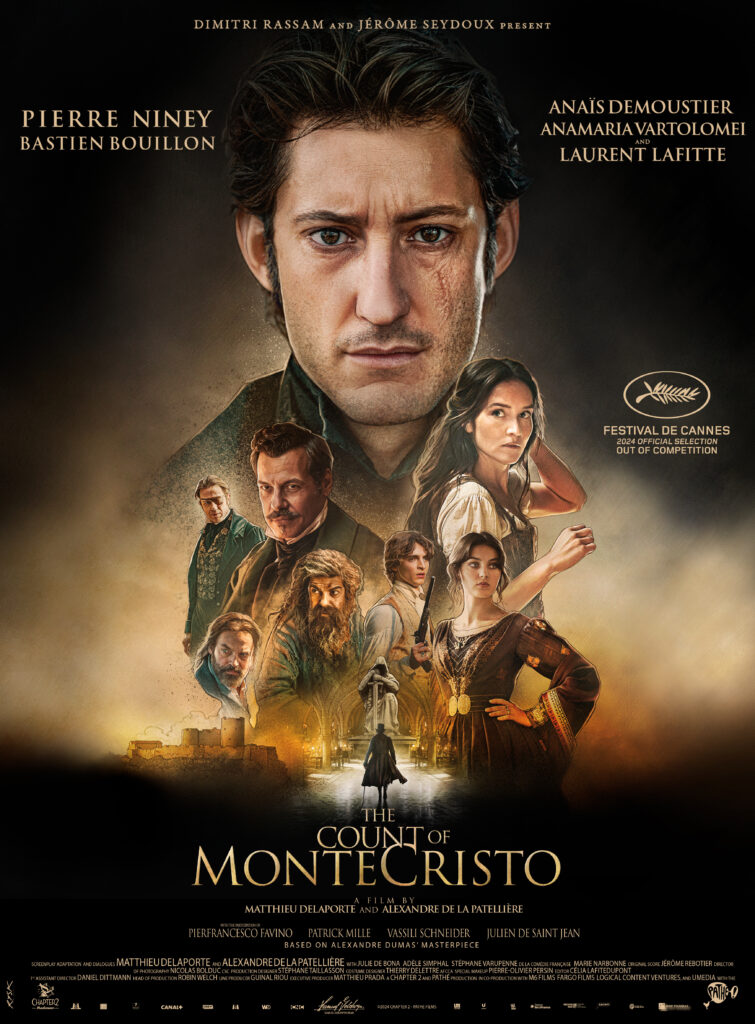Re-examining The Count Of Monte Cristo: A Review For Modern Readers

Table of Contents
The Enduring Appeal of The Count of Monte Cristo
The enduring popularity of The Count of Monte Cristo stems from a potent combination of factors that continue to resonate with readers, regardless of the era. Its timeless themes of betrayal, revenge, and ultimately, redemption, form the bedrock of a captivating narrative.
-
Thrilling Adventure and Suspense: Dumas masterfully crafts a thrilling adventure, filled with daring escapes, hidden identities, and unexpected twists. The suspense builds relentlessly, keeping readers on the edge of their seats as Edmond Dantes's meticulously planned revenge unfolds. The intricate plot, filled with foreshadowing and cleverly concealed clues, ensures constant engagement.
-
Romance and Intrigue: The novel is not solely focused on revenge; interwoven within the plot are compelling romantic elements. Edmond's relationships, both passionate and strategic, add layers of complexity and emotional depth to the narrative. These romantic entanglements often serve to further the plot and complicate Edmond's quest for vengeance.
-
Timeless Themes and Complex Characters: The novel explores universal themes—betrayal, injustice, the seductive nature of revenge, and the possibility of redemption—which remain profoundly relevant today. The characters themselves are richly developed, morally ambiguous, and compellingly flawed. Their motivations are complex, their journeys transformative, making them relatable even across centuries. The contrast between characters like the virtuous Haydée and the villainous Fernand Mondego highlights the moral complexities of the narrative.
-
Exotic Settings and Vivid Descriptions: The exotic settings of the novel—from the Château d'If to the bustling streets of Paris and the vibrant landscapes of the Mediterranean—add to its allure. Dumas’s descriptive prose transports readers to these locations, enhancing the immersive reading experience. These settings aren’t merely backdrops; they actively shape the characters' journeys and influence the unfolding of the plot.
Re-examining the Themes of Revenge and Justice in a Modern Context
Edmond Dantes's quest for revenge forms the central narrative of The Count of Monte Cristo. However, examining this quest through a modern lens raises significant ethical questions.
-
The Morality of Revenge: While readers sympathize with Edmond's suffering and his desire for retribution, the novel forces us to confront the moral implications of revenge. Is it ever justified? Does it truly bring satisfaction or only perpetuate a cycle of violence? The novel presents a nuanced portrayal, showcasing both the seductive allure and the ultimately destructive consequences of revenge.
-
Justice System Flaws: The novel depicts a flawed and corrupt justice system, highlighting the potential for injustice and the vulnerability of individuals to powerful forces. This resonates with contemporary concerns about fairness, equality, and the imperfections of legal systems worldwide. Edmond’s wrongful imprisonment serves as a stark reminder of the fragility of justice.
-
Justice vs. Revenge: The novel blurs the lines between justice and revenge. While Edmond seeks to punish those who wronged him, his methods often stray beyond what could be considered just or morally acceptable. This raises questions about the nature of justice itself and the acceptable means of achieving it. The novel leaves the reader to contemplate the true meaning of justice and its complexities.
-
Consequences of Actions: Edmond's actions, driven by a desire for revenge, have far-reaching consequences, impacting not only his enemies but also those he cares about. The novel explores the long-term effects of revenge, highlighting the potential for collateral damage and the enduring impact on individuals and relationships. The novel doesn't shy away from portraying the destructive ripple effects of Edmond's actions.
The Novel's Limitations and Criticisms
Despite its enduring appeal, The Count of Monte Cristo is not without its flaws. A modern readership will likely find aspects that require critical consideration.
-
Colonialism and Stereotypes: The novel reflects the colonial attitudes of its time, and some of its portrayals of non-European characters and cultures may be considered stereotypical or offensive by today's standards. These depictions need to be viewed within their historical context, but acknowledging their problematic nature is essential for a responsible reading.
-
Historical Context: Understanding the historical context in which The Count of Monte Cristo was written is crucial to fully appreciating its strengths and limitations. The societal norms and political realities of 19th-century France significantly shaped the novel’s narrative and characters. Recognizing this historical context allows for a more nuanced interpretation of the text.
The Count of Monte Cristo’s Lasting Legacy
The influence of The Count of Monte Cristo extends far beyond its pages. Its enduring popularity and literary significance are evident in its numerous adaptations and its ongoing impact on popular culture.
-
Adaptations in Various Media: The novel has been adapted countless times for film, television, and other media, demonstrating its enduring appeal and adaptability to different formats. These adaptations, from classic film versions to modern reinterpretations, showcase the versatility and enduring power of Dumas's storytelling.
-
Influence on Literature and Culture: The Count of Monte Cristo has significantly influenced subsequent literature, particularly within the genres of adventure novels and revenge tales. Its intricate plot structure, memorable characters, and powerful themes continue to inspire authors and filmmakers. The narrative structure and character archetypes have been replicated and reinterpreted in countless works.
Conclusion:
Re-examining The Count of Monte Cristo reveals a complex and captivating novel with both enduring strengths and undeniable limitations. Its thrilling adventure, complex characters, and exploration of timeless themes continue to resonate with modern readers, while its portrayal of certain aspects requires critical engagement. The novel’s exploration of revenge and justice forces us to confront difficult moral questions, prompting reflection on the complexities of these concepts. However, the problematic aspects, particularly regarding its historical context and some stereotypical representations, demand careful consideration. Revisit or discover The Count of Monte Cristo today—this classic adventure novel continues to offer valuable insights into the enduring human quest for justice and the complex consequences of revenge. Further research into Alexandre Dumas's life and other works, or a deeper exploration of the literary themes of revenge and justice, will enrich your understanding of this timeless tale.

Featured Posts
-
 Ufc 314 Volkanovski Vs Lopes Complete Results And Analysis Of Winners And Losers
May 04, 2025
Ufc 314 Volkanovski Vs Lopes Complete Results And Analysis Of Winners And Losers
May 04, 2025 -
 Eubank Jr Vs Benn A Bigger Fight Than Canelo
May 04, 2025
Eubank Jr Vs Benn A Bigger Fight Than Canelo
May 04, 2025 -
 Deutschland Sucht Den Superstar Einschaltquoten Heat One Esc 2025
May 04, 2025
Deutschland Sucht Den Superstar Einschaltquoten Heat One Esc 2025
May 04, 2025 -
 Bakoles Title Eliminator Stripped Impact On Ajagba Vs Parker
May 04, 2025
Bakoles Title Eliminator Stripped Impact On Ajagba Vs Parker
May 04, 2025 -
 May 2025 Ufc Events A Complete Guide To The Fight Card Including Ufc 315
May 04, 2025
May 2025 Ufc Events A Complete Guide To The Fight Card Including Ufc 315
May 04, 2025
